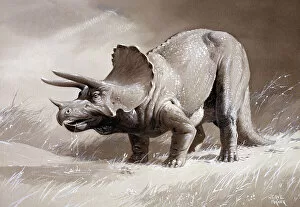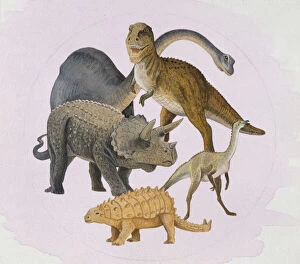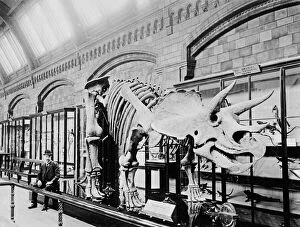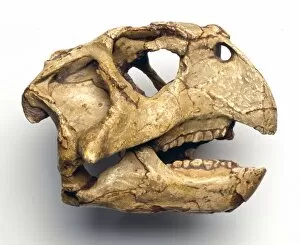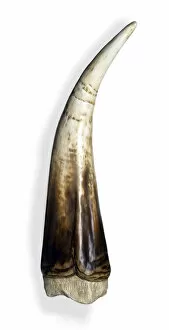Ceratopian Collection
Step back in time and marvel at the majestic ceratopian, a group of herbivorous dinosaurs that roamed the Earth millions of years ago
All Professionally Made to Order for Quick Shipping
Step back in time and marvel at the majestic ceratopian, a group of herbivorous dinosaurs that roamed the Earth millions of years ago. Among them, the iconic Triceratops stands tall with its three impressive horns and bony frill. The Triceratop dinosaur skeleton C016 / 5928 serves as a fascinating window into their ancient world, reminding us of their sheer size and strength. These magnificent creatures were not alone; they shared their habitat with other ceratopians like Protoceratops, known for its beak-like snout. The intricate details found in a Triceratops horn or Psittacosaurus skull reveal clues about these prehistoric beings' lives. Their skin was adorned with unique patterns and textures, as seen in the mesmerizing Triceratops skin detail. As we study these fossils today, we gain insights into how these creatures lived and interacted within their ecosystems. From Mongolia's vast landscapes comes another remarkable find - the Protoceratops skull. This discovery sheds light on the diversity of ceratopians across different regions during this era. A visit to see a complete Triceratops skeleton is an awe-inspiring experience that transports us back to when these giants once roamed freely. Standing beside such an immense structure evokes feelings of wonderment at nature's ability to create such incredible creatures. Ceratonians have captivated our imaginations for centuries, inspiring countless books, movies, and scientific studies. They continue to intrigue scientists who strive to uncover more secrets hidden within their fossilized remains. As we delve deeper into understanding these enigmatic beasts from eons past, let us appreciate the beauty and complexity of life on Earth throughout history – where even giants like triceratiopes once reigned supreme.

